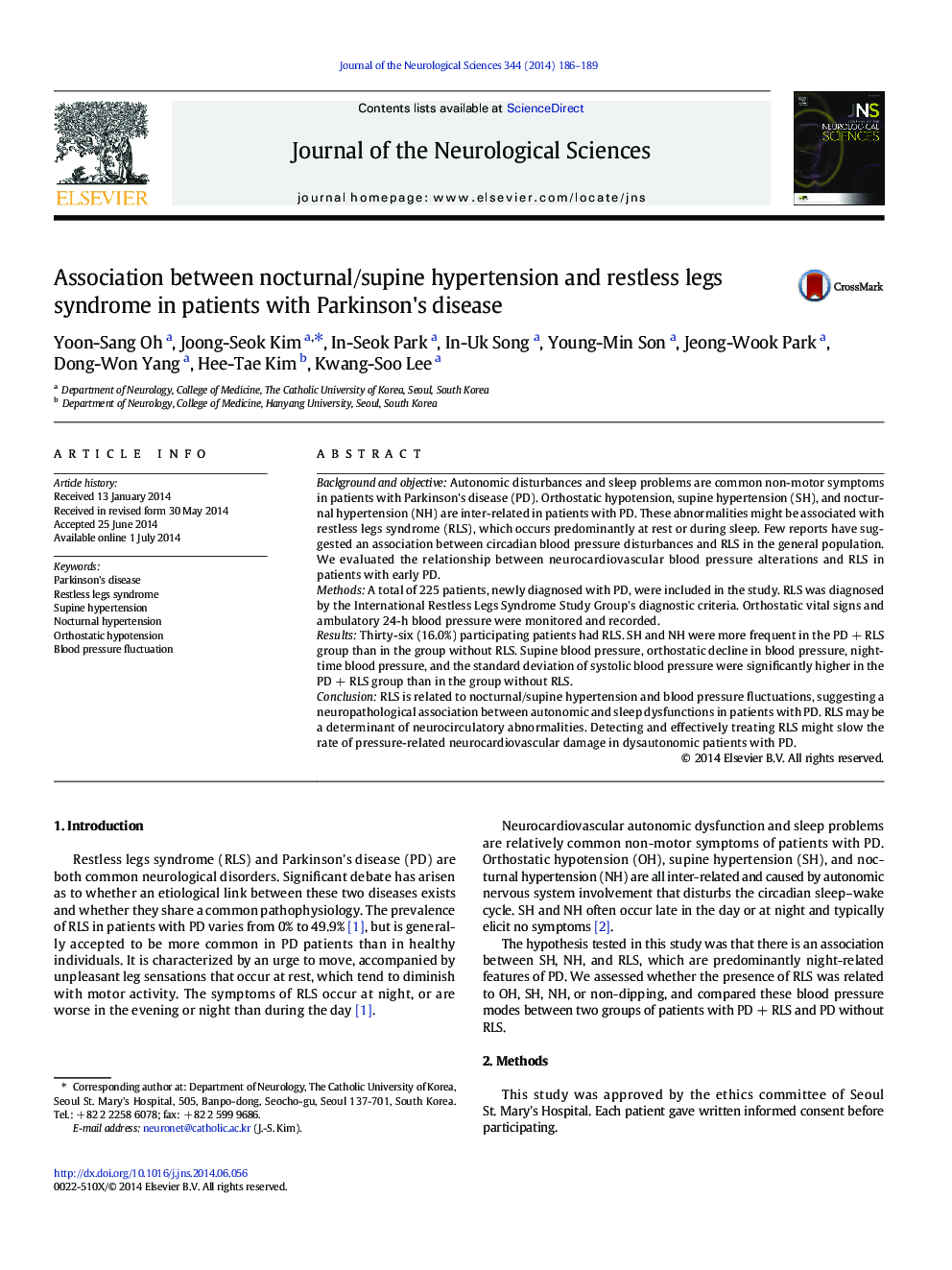| کد مقاله | کد نشریه | سال انتشار | مقاله انگلیسی | نسخه تمام متن |
|---|---|---|---|---|
| 1913546 | 1535118 | 2014 | 4 صفحه PDF | دانلود رایگان |
• Autonomic and sleep problems are common nonmotor symptoms in Parkinson's disease (PD).
• Restless legs syndrome is associated with nocturnal/supine hypertensions in PD.
• This suggests that autonomic and sleep dysfunctions in PD are pathologically related.
• Minimizing RLS may benefit reducing neurocirculatory abnormalities associated with damage.
Background and objectiveAutonomic disturbances and sleep problems are common non-motor symptoms in patients with Parkinson's disease (PD). Orthostatic hypotension, supine hypertension (SH), and nocturnal hypertension (NH) are inter-related in patients with PD. These abnormalities might be associated with restless legs syndrome (RLS), which occurs predominantly at rest or during sleep. Few reports have suggested an association between circadian blood pressure disturbances and RLS in the general population. We evaluated the relationship between neurocardiovascular blood pressure alterations and RLS in patients with early PD.MethodsA total of 225 patients, newly diagnosed with PD, were included in the study. RLS was diagnosed by the International Restless Legs Syndrome Study Group's diagnostic criteria. Orthostatic vital signs and ambulatory 24-h blood pressure were monitored and recorded.ResultsThirty-six (16.0%) participating patients had RLS. SH and NH were more frequent in the PD + RLS group than in the group without RLS. Supine blood pressure, orthostatic decline in blood pressure, nighttime blood pressure, and the standard deviation of systolic blood pressure were significantly higher in the PD + RLS group than in the group without RLS.ConclusionRLS is related to nocturnal/supine hypertension and blood pressure fluctuations, suggesting a neuropathological association between autonomic and sleep dysfunctions in patients with PD. RLS may be a determinant of neurocirculatory abnormalities. Detecting and effectively treating RLS might slow the rate of pressure-related neurocardiovascular damage in dysautonomic patients with PD.
Journal: Journal of the Neurological Sciences - Volume 344, Issues 1–2, 15 September 2014, Pages 186–189
